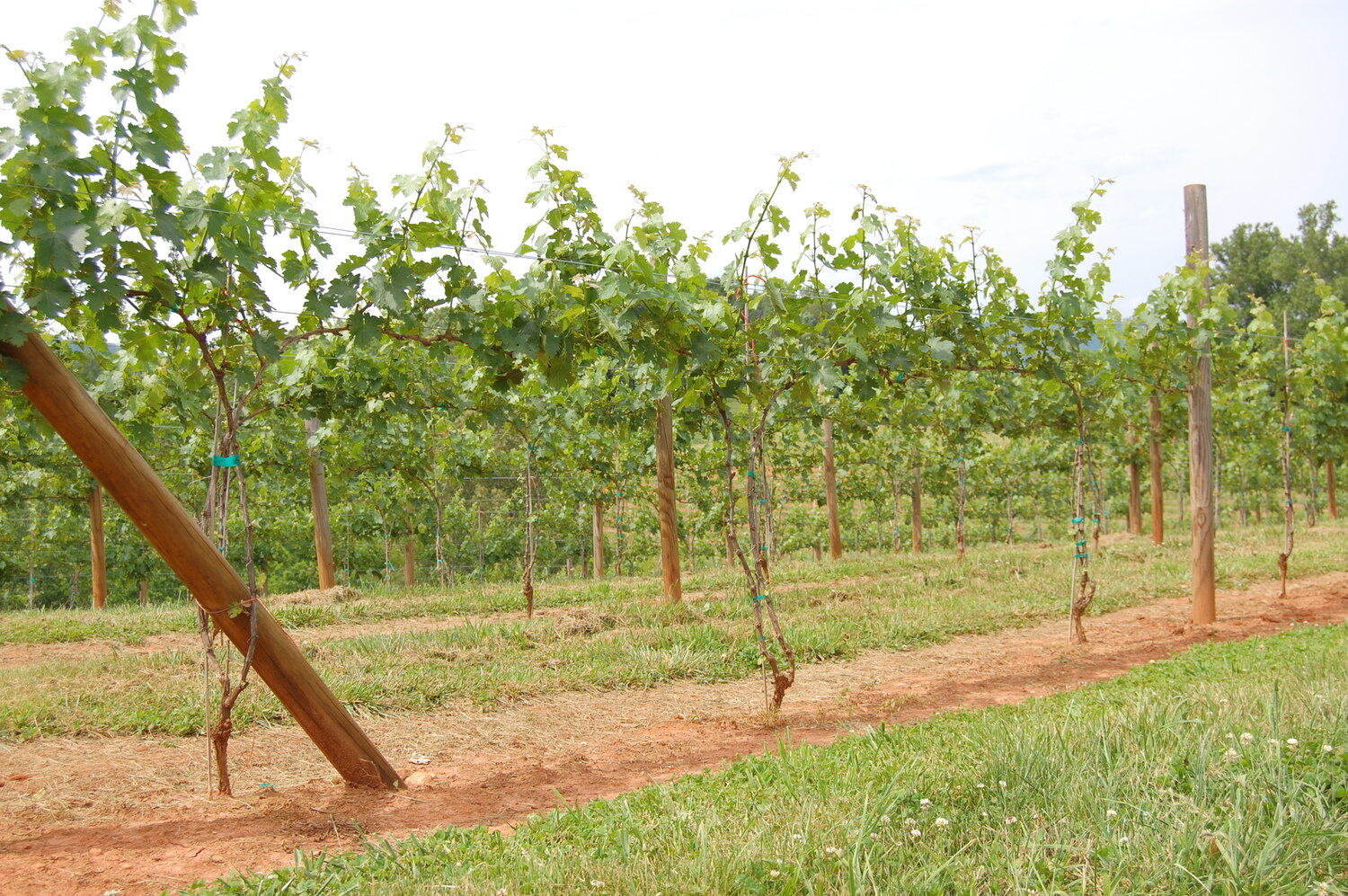A vineyard for you
05/16/2015
05/16/2015

Before we started this project, I talked to many, many growers and winemakers across the western half of NC and four or five others in north GA. We were seeking advice from those that had gone before us, lessons learned, and really, just trying to figure out how to do it. After making an appointment, or even doing a JRB [“just rode by”, a term I learned from a very wise outside plant construction foreman], they were all very gracious and generous with their time and lessons learned. And all of them answered my first question in a nearly identical fashion.
Q: What advice would you give someone starting a vineyard? What tidbit do you wish you had known when you started?
A: Don’t start a vineyard! But, if you are set on doing it, here is what we [learned/tried/would do differently]…
It is interesting to me to get similar questions these days. I feel like we are trying to figure it all out, so how am I possibly qualified to provide guidance to someone else? Just in case you are asking, “What advice would you give someone starting a vineyard?”, here goes:
Don’t start a vineyard! 🙂 But, if you are set on doing it, here are a couple of things we have learned and a couple of things that we would change.
WNC seems to be a pretty good place for grapes. You still need to choose the site carefully, because shedding as much of our usually-abundant rainfall is important. If you have the option, choose a south facing slope that is well drained and not near the bottom of the hill. Make sure there are no barriers, like structures or a wood line, that can trap moisture and cold air around the vines. Other aspects will be ok too, but all else equal, south facing is best.
You need to choose varieties carefully. If you are under 2500′ in elevation, you can probably grow vinifera, but you need to choose ‘tougher’ varieties. Over 2500′, cold-hardy hybrids are a good choice. You will also want to choose grapes that have relatively loose clusters and relatively thick skins. Our moisture, including rainfall, morning fog, and crazy southern humidity, has a big impact on disease pressure. Loose clusters and thick skins give you another layer of protection from mildew and rot.
What varieties seem to do best in our vineyard? Everything we have planted has done reasonably well because we followed our own advice above! The Cabernet Franc, Petit Verdot, Sangiovese [excluding the Brunello clone], and Barbera seem to do consistently well, and they seem to tolerate the colder months best. Cabernet Sauvignon and Montepulciano have been good performers too, but the Montepulciano is the most mildew-sensitive, and Montepulciano may be just a bit cold sensitive, too. It is too early in our experience to make a call on the Petite Manseng, but I have high hopes if we can just get the vines established. We planted that variety from 2012-2015, and we have had some really cold weather in all of the winters of having that variety. We had a very late freeze in 2014, and that has been a significant contributor to the good bit of vine loss we have seen in the Petite Manseng. I think, though I have no proof, that once established, these vines will be a little tougher.
Create a site plan, especially if you are building your place in phases like we are. I love our tasting room, but I really wish it were sitting on the other side of the driveway. Our tasting room is on a south slope, a place that would be better utilized to grow vines. But like I told someone recently, that ship has sailed, or more accurately, that concrete is poured!
I am sure there is more. It will have to wait for another time. There is one other thing about farm life. If you like the work, it is very rewarding emotionally. I am happy knowing our piece of property will endure at least one more generation as a farm.